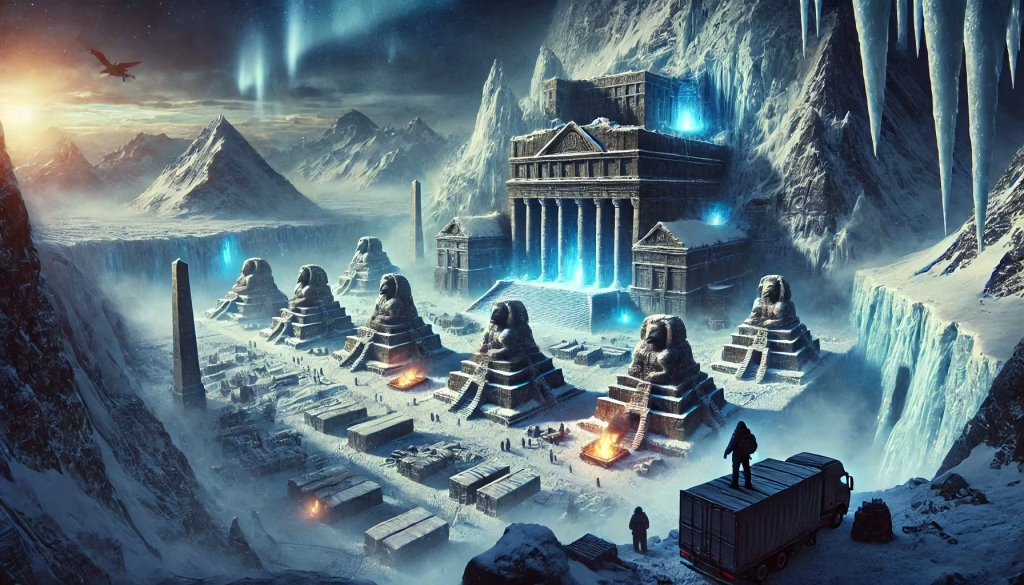When we imagine ancient civilizations, we often think of societies that emerged thousands of years ago along river valleys or fertile lands. But what if humanity’s story began much earlier—before the ice age wiped away evidence of our first attempts at civilization? Could there have been advanced societies lost beneath ice sheets, waiting to rewrite our understanding of human origins?
In this exploration, we’ll uncover fascinating theories and intriguing evidence that suggest civilizations may have flourished long before conventional history admits.
The Ice Age Mystery
Approximately 12,000 years ago, Earth emerged from its last great Ice Age, a period known as the Pleistocene Epoch. Massive glaciers receded, reshaping the landscape and potentially erasing evidence of advanced human cultures that existed beforehand.
Recent archaeological discoveries and theories have challenged the conventional timeline of human history, suggesting that humans were far more advanced before the ice claimed their civilization.

Göbekli Tepe: A Glimpse of Pre-Ice Civilization?
Göbekli Tepe, located in modern-day Turkey, stunned archaeologists when carbon dating placed it at around 12,000 years old—predating even the oldest known civilizations in Mesopotamia and Egypt. This enigmatic site, filled with sophisticated stone carvings and complex structures, suggests advanced organization and possibly lost technology.
Could Göbekli Tepe be just the tip of the iceberg—evidence of a civilization existing at the ice age’s edge?
Myths of Advanced Lost Civilizations
Ancient myths and oral traditions from diverse cultures, including the Egyptians, Greeks, Mayans, and indigenous peoples worldwide, speak of advanced civilizations destroyed by catastrophic floods or climate shifts. Plato famously wrote about Atlantis, a sophisticated civilization swallowed by the ocean in a single disastrous day.
Could these universal stories be collective memories of a lost pre-ice age civilization erased from history?
Underwater Ruins: Submerged Cities and Structures
Marine archaeologists have discovered submerged ruins off the coasts of Japan, India, Cuba, and the Mediterranean Sea, raising the possibility of cities drowned by rising oceans at the end of the last Ice Age. Notable examples like Yonaguni Monument in Japan hint at sophisticated architecture that predates known civilizations.
Are these underwater cities remnants of societies that thrived before the great melt?
Scientific Controversies and Challenges
Despite these intriguing discoveries, mainstream archaeology remains cautious. Critics argue there isn’t yet definitive proof linking submerged or ancient sites directly to civilizations predating the Ice Age. However, an increasing number of researchers believe it’s worth investigating the possibility of advanced societies being wiped out by dramatic climate changes approximately 12,000 years ago.
What Could a Pre-Ice Age Civilization Mean for Humanity?
If a highly advanced civilization indeed existed before the Ice Age, the implications are immense:
- It would challenge established archaeological and historical timelines.
- It would reshape our understanding of human potential and progress.
- It might even provide insights into how humanity can survive future climate catastrophes.
Conclusion: Rewriting Human History
The possibility that advanced human civilizations existed before the last Ice Age captivates the imagination and challenges everything we know about humanity’s ancient past. Ongoing research and discoveries continue to bring forward compelling new evidence.
Ultimately, these discoveries urge us to remain open-minded and ask ourselves:
“Are we prepared to reconsider our past if evidence finally emerges from beneath the ice?”
